The situation at the front
Russian forces are advancing in the Limansky, Bakhmutsky, Avdeevsky and Maryinsky directions, according to the evening summary of the General Staff of the Armed Forces of Ukraine for April 12. Over the past day, the Ukrainian army repulsed 34 attacks. Russia continues to make attempts to capture Bakhmut. In recent days, Wagner PMC mercenaries managed to seize the railway station, the elevator, the agricultural lyceum and the Avangard stadium, according to the Ukrainian Telegram channel DeepState.
The official representative of the Eastern Group of Forces of the Armed Forces of Ukraine, Sergei Cherevaty, rejected the words of the founder of PMC Wagner, Yevgeny Prigozhin, who said that Russian forces control 80% of Bakhmut. “This statement by Prigozhin is not true. I just spoke to the commander of one of the brigades that defend the city. I can say with confidence that the Ukrainian defense forces control a much larger percentage of the territory of Bakhmut, Prigozhin needs to demonstrate at least some kind of victory in the city, which they have been trying to capture for nine months in a row, which is why he makes such statements, ”Cherevaty told CNN.
The daily report of the British military intelligence says that Russia in recent weeks continues to build defenses in the Zaporozhye region. The length of the defensive structures located in three lines reaches 120 km. The lines are 10–20 km apart from each other. It is noted that the Russian side, apparently, is making significant efforts to defend this area, as it is waiting for an attack by the Armed Forces of Ukraine in the direction of Melitopol. British military intelligence analysts believe that the defenses can potentially become a serious obstacle to the attackers, but they will only be useful if the defenders have enough artillery and soldiers.
Military expert Alexander Kovalenko told The Insider that defensive fortifications should not be considered an outdated method of defense, but emphasized that their effectiveness depends on many factors.
“It all depends on the nature of the application and the type of hostilities. On the example of the Bakhmut bridgehead, it can be seen that such lines of defense justify themselves: they significantly slow down the advance of the Russian occupation troops, for many months they did not allow them to approach the city. Everything depends on how well these lines of defense and fortifications are formed, on how the process of their defense is organized. Is there a resource at all to keep them in a state of active defense. A huge number of factors affect both the success of holding such objects and the success of overcoming them.
In the Zaporozhye region, Russian forces are digging in justifiably. They create two lines of defense at the forefront, and another line of defense of the tracks. In general, this is logical, but there is one minus: if the defense begins to fall under the onslaught of the attackers, then the rest of the lines also fall under the onslaught of the retreating. This is called a cascade collapse of the defense, and with this cascade you can even roll away to Melitopol. They can slow down, but not block offensive actions. It all depends on the nature of these offensive actions.
As for the expected actions of the Armed Forces of Ukraine, I can only say that this will be a scenario that was not used either in the northern bridgehead, or in Kharkiv, or in the right-bank Kherson region. There, in fact, in all three cases, a variety of counteroffensive scenarios were used – in the northern bridgehead there was exhaustion and destruction of logistics, in Kharkov there were swift assault actions, and in the right-bank Kherson region there was an exhaustion of the enemy and forcing him to flee. The Zaporozhye region is by far the most dug up, but it is not the only one where a counteroffensive can take place. There are similar conditions in the left-bank Kherson region, in the Luhansk region there may also be a counteroffensive. These are several bridgeheads, but for some reason the Russian command is concentrating in the Zaporozhye region. The counteroffensive itself should be sudden and unexpected, so I'm not sure that this will happen in the Zaporozhye region itself.
I looked through the defense lines that are being built on the temporarily occupied Crimean peninsula; in the north of Crimea, they really place defenses in the Medvedevka-Dzhankoy-Armyansk triangle. They dig in in the area of Lake Sivash, dig in in the area of Medvedevka, Maslovo, Novoivanovka, and in the area of Armyansk they also equip their lines of defense and fortifications quite seriously. But why are they needed in the Evpatoria region? I thought that this was to calm the supporters of the “Russian world”, they say, we have everything under control and we are ready for defense. There is also a corruption component. There was information that [anti-tank] gouges were purchased at five to six times higher prices.
To carry out a landing there, you need a large number of ships, you need the group to cover it all, you need aviation to provide air cover, that is, everything that Ukraine does not have. And even if these forces were, then any landing in the area where there are anti-ship systems is risky and these are enormous losses. The Russian occupation forces have such complexes in coastal defense, for example, as the Bastion anti-ship missile system with P-800 Oniks missiles. In fact, a large landing craft for 400 marines turns into such a large landing mass grave. This is irrational. For the same reason, the Russian command did not go on a landing in the Odessa region on February 24-26, because they did not fully know whether or not they could destroy the Neptune anti-missile system in the first hours of massive missile and bomb strikes. They remained in this ignorance until the destruction of the missile cruiser Moskva. A fairly large warship with a displacement of 11 thousand tons is destroyed by two missiles, and a large landing ship is up to 5 thousand tons of displacement.
I am now looking at satellite images and I see how in the Vitino area, 15 km from Evpatoria, 152-caliber howitzers are deployed along the line, directed towards the sea. They send howitzers there, which are not enough in the combat zone along the line of contact. This is the allocation of ammunition, calculations and crew. Now in the left-bank Kherson region and in the Zaporozhye region, the Russian contingent has a shortage of ammunition and artillery, but it was concentrated here. They take this option seriously, although it is irrational. This is also panic, a chaotic attitude towards defense and a lack of understanding by the Russian command of what to expect from Ukraine in relation to Crimea.
There are options for landing small sabotage groups to carry out certain actions, but countering them is a completely different methodology and tactics. It all depends on where and how it is placed, and in the case of the placement of these lines of defense, they represent a certain obstacle. They are placed randomly, which is important. Yes, they go along the main logistics routes, for example, they are trying to limit the movement along the main routes from Vasilyevka to Melitopol through Tokmak, which is their goal, but it is not possible to say that the AFU will apply the classic scenario according to the Soviet-era manuals. . By the way, these defensive actions are carried out according to these manuals. Their effectiveness is debatable.
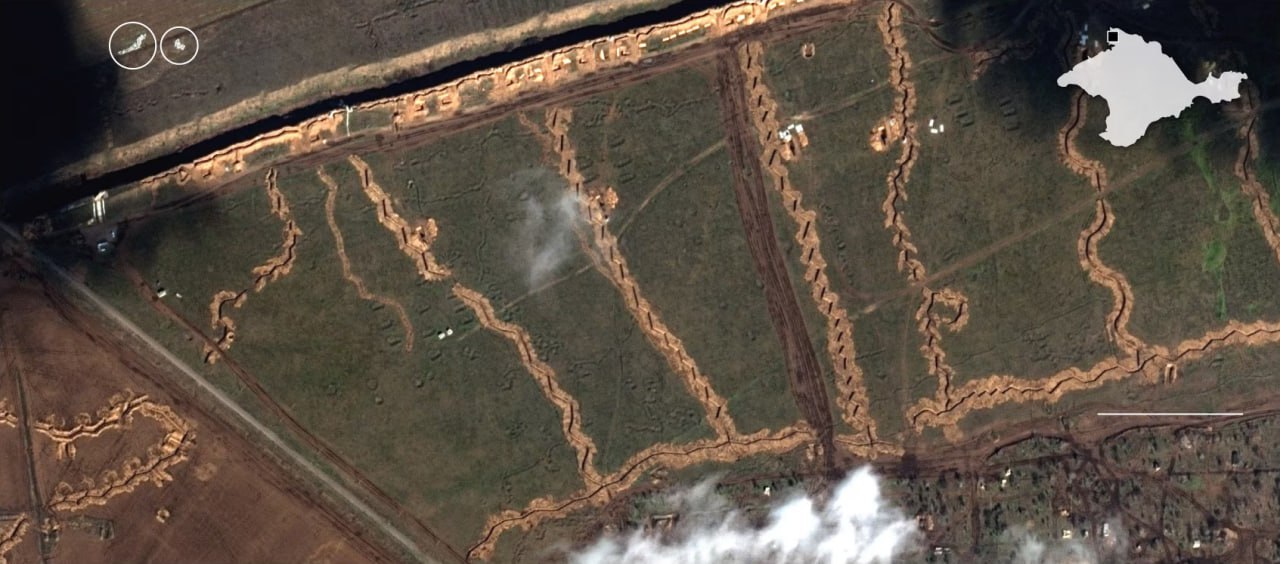
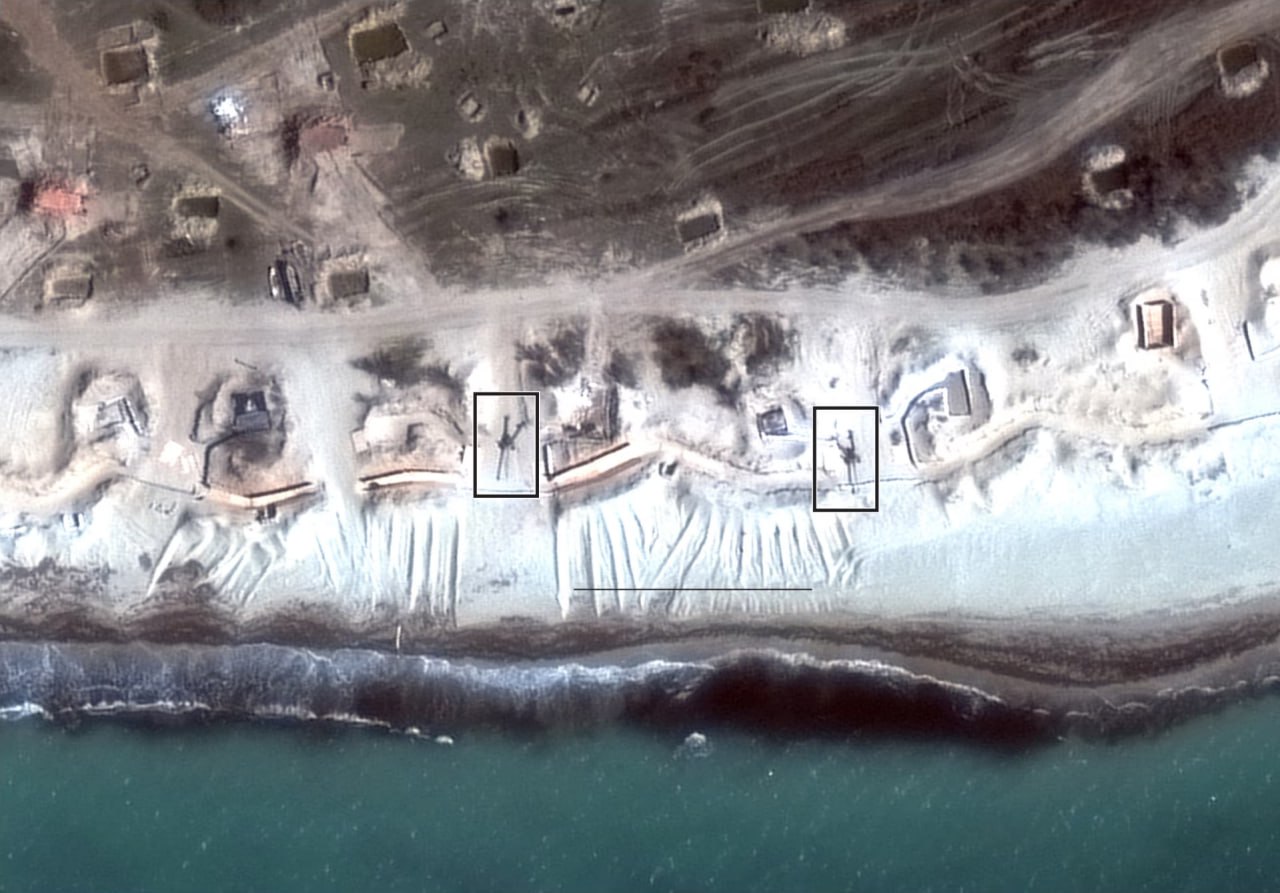
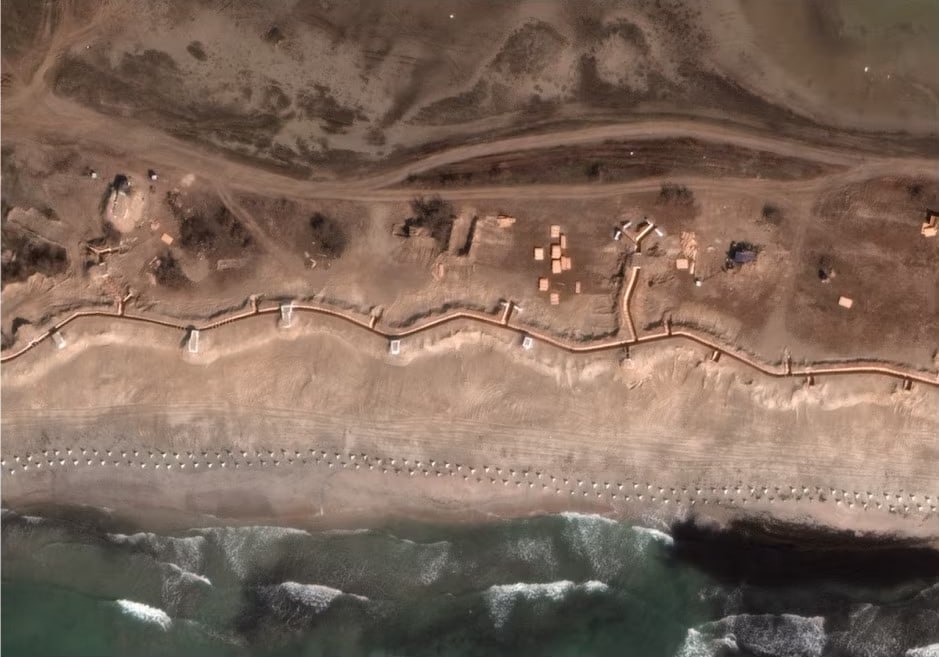
shelling
According to the summary of the General Staff of the Armed Forces of Ukraine, Russian forces shelled settlements in the Chernihiv, Kharkiv, Luhansk, Donetsk, Zaporozhye and Kherson regions. In total, 19 air strikes were recorded, as well as 10 shelling from the MLRS, both on the locations of Ukrainian troops and on civilian infrastructure. There are wounded civilians.
Several settlements in the Belgorod region came under fire, Governor Vyacheslav Gladkov said . A resident of the village of Novostroevka-Vtoraya received a shell shock when a shell exploded next to his car. Several private houses were damaged.
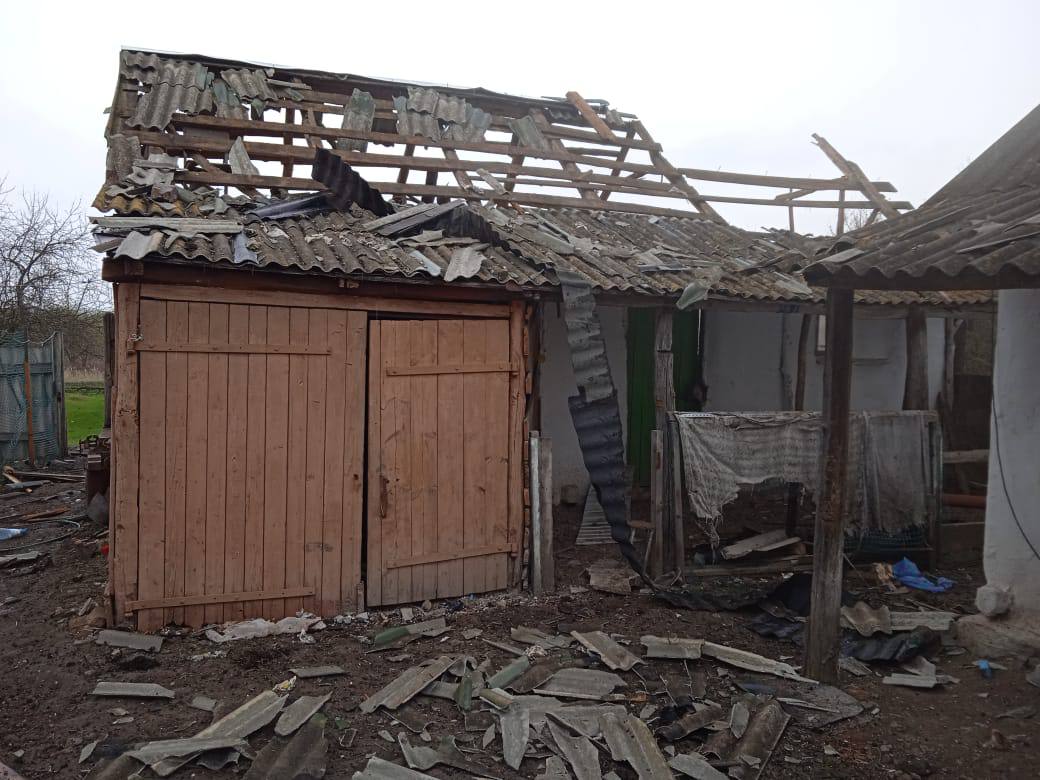

Losses
Ukrainians say they have shot down a Russian Orlan-10 drone. The General Staff of the Armed Forces of Ukraine published a video of the destruction of the Russian electronic warfare station (EW) "Strizh".
Arms deliveries
Serbia has agreed to supply weapons to Ukraine or has already sent them, according to a secret Pentagon document dated March 2, which was leaked online in a recent leak. Serbian Defense Minister Milos Vucevic called this information a lie.
Polska Agencja Prasowa writes that France is blocking the allocation of €2 billion by the European Union for the purchase of ammunition for Ukraine. The French are not satisfied with the mechanism by which it is supposed to purchase shells in third countries for subsequent transfer to Kyiv.
Ukraine has apparently received a batch of 112 RSKES APILAS (JVA 2101) anti-tank missile systems from Finland, Ukraine Weapons Tracker reports .
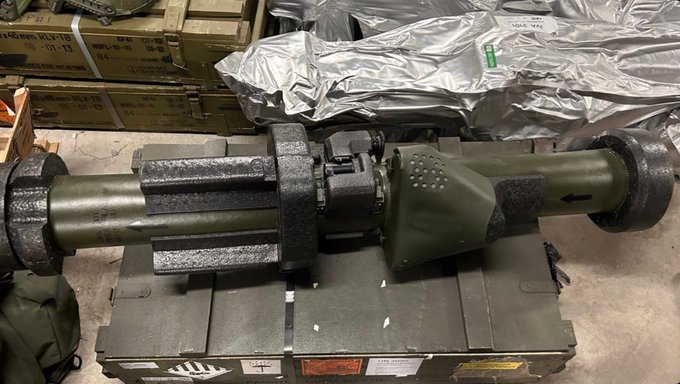
The same project drew attention to the Ukrainian video with the Hyacinth-B towed gun. According to Ukraine Weapons Tracker, it was also shipped from Finland. Guns of this model were in service with the Armed Forces of Ukraine before the start of a full-scale invasion (according to the confirmed data of the Oryx project, 11 of them were lost). However, the camouflage of the Hyacinth in the video matches the coloring of the guns, at least until recently, were in service with the Finnish army. Finland supplies Ukraine with a significant amount of military equipment, but, as a rule, does not disclose the composition of the deliveries.
South Korea has promised to provide the United States with 500,000 rounds for 155-millimeter artillery pieces, allowing Washington to more actively supply Ukraine with ammunition, the South Korean newspaper Dong-a Ilbo reported .
A video with the brutal murder of a Ukrainian prisoner appeared on the network
Late in the evening of April 11, a video appeared on Telegram channels showing the murder of an unarmed man, apparently a Ukrainian soldier. A man in camouflage cuts off his head. People standing around cheer on the killer.
President of Ukraine Volodymyr Zelensky recorded a video message in which he emphasized that such cruelty for the Russian army is not an exception, but a systemic phenomenon. “There is something that no one in the world can ignore: how easily these beasts kill. <…> This is Russia as it is,” Zelensky said.
On April 12, another video was found online showing the decapitated bodies of two Ukrainian soldiers. Presumably, the video was filmed by Wagner PMC mercenaries near Bakhmut.
The court refused to consider the case of Z-patriot Yuri Yevich
The court in the Kaluga region did not accept the protocol on "discrediting the Russian army" against the military surgeon and Z-patriot Yuri Yevich. Ukrainian military expert, reserve colonel Roman Svitan said that this doctor participated in the torture of Ukrainian prisoners in the Donetsk torture chamber "Isolation". Jevic also tortured Svitan himself, who was captured in 2014.
Russian hackers break into surveillance cameras in Ukraine
Russian hackers are hacking CCTV cameras installed in cafes in Ukrainian cities to monitor the movement of convoys and trains delivering humanitarian and military aid. Rob Joyce, director of cybersecurity at the NSA, spoke about this.
Latvia confirms sending military to Ukraine
Latvia confirmed information from the "Pentagon documents", according to one of which there are dozens of military personnel of NATO countries, including 17 Latvian military personnel, in Ukraine. The Latvian Defense Ministry acknowledged the presence of a group of its military personnel in Ukraine and explained that they are guarding the country's cargo and embassy, as well as performing other support functions, Delfi reports . They do not participate in hostilities, the Latvian military department assured.
Register of persons liable for military service
The head of the Ministry of Digital Development, Maksut Shadayev, said that the register of persons liable for military service, in which data on sent subpoenas will be entered, after which they will be considered handed in, will not work until autumn. The Federation Council approved a bill on the creation of a unified register of conscripts, which passed through the State Duma the day before.
The adopted amendments to the law "On military duty and military service" made changes to the paragraphs on conscripts. If now the Ministry of Defense can offer a conscript to conclude a contract only three months after the start of service, then after the amendments are made, this can be done immediately. Thus, conscripts can be sent to the front in a shorter time than before.
Former "berkut" was suspected of creating a network of agents
The Ukrainian authorities notified the former “Berkut” Valery Astakhov, who, after the occupation of Crimea, went over to the side of Russia, of suspicion of creating an FSB agent network in the front-line regions of the country. According to the SBU, Astakhov leads a group that was exposed during counter-sabotage activities in the Donetsk region in August 2022. It is alleged that after the start of a full-scale invasion, the FSB instructed Astakhov to form his own intelligence group for reconnaissance and subversive activities against Ukraine.
About the main events of the war for April 11 – in the previous report of The Insider: “ Electronic summonses for the Russians, the decisive stage of the battle for Bakhmut, the loss of the legendary Bunny tank. What's going on at the front ."


